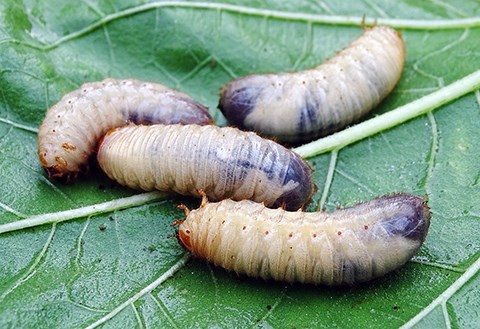If you’ve noticed lawns, sports fields and city boulevards are in better shape this year than in past seasons, you’re not alone.
There has been a sharp decrease in complaints from Tri-City property owners about birds, raccoons and other wildlife chewing up the grass to get to European chafer beetles — although raccoons and birds have been known to tear up lawns in fall and winter to get at the bugs.
For several years, the exotic pest has wreaked havoc on local green spaces, with municipalities offering solutions to residents and business owners to control the infestation including nematode treatments, which are most effective when applied around this time of year: late July to mid-August.
Officials with the cities of Coquitlam, Port Coquitlam and Port Moody say their public outreach may have helped to battle the bug.
So far this year, Coquitlam has issued about 18% fewer nematode watering permits (temporary exemptions from current lawn watering regulations) compared with the city’s average over the past two years, said Steffanie Warriner, environmental services division manager.
Port Coquitlam has only had one complaint this year about damage to civic green areas, said Mitchell Guest, acting section manager for the parks division. “We have used some nematodes at certain locations but results have been the same at all locations so it’s hard to say if the nematodes were effective,” Guest said.
While PoCo city hall doesn't track the number of complaints, spokesperson Pardeep Purewal noted, verbal comments have been voiced about the need to re-seed; so far this year, 122 nematode watering permits have been issued versus 234 last year although "this year, we required residents to upload a copy of their nematodes purchase receipt, which may explain some of the difference," Purewal said.
In Port Moody, the number of nematode watering permits issued this year has dropped to 64 versus 123 in 2018 and 118 and 195 in the two previous years, respectively.
Parks manager Julie Pavey-Tomlinson said while the permits are a good measure to follow chafer beetle trends, residents may be using other treatments than nematodes to curb the damage.
“Chafer beetle populations are known to be cyclical and one good year does not necessarily indicate a long-term decrease in their numbers,” she said.
“Chafer beetles are well established in much of Metro Vancouver and have spread their footprint,” stated Gail Wallin, executive director for Invasive Species Council of BC. “They come in cycles.”
She added, "At this time of the year, they are often in an early life cycle stage, which is very small grub and which makes it harder to detect. As the grub matures and becomes bigger, it will be easier to see this fall. Starting later this month and into October, the birds and animals will feed on the grub which is when people will start to notice the damage to their lawns. This simply might be a time of year when people aren’t seeing the damage due to the smaller size of the grub."
To fight the infestation, Tri-City residents are encouraged to continue to:
• use lawn alternatives;
• apply natural, organic fertilizer;
• maintain a grass height of at least 6 cm and leaving clippings on the ground to act as a mulch;
• water newly planted lawns frequently to keep the soil surface moist;
• and order nematodes from a garden centre.
••••••
The cities have dedicated websites for home and business owners:
• Coquitlam: coquitlam.ca/chaferbeetle
• Port Coquitlam: portcoquitlam.ca/chaferbeetle
• Port Moody: portmoody.ca/chafterbeetle



